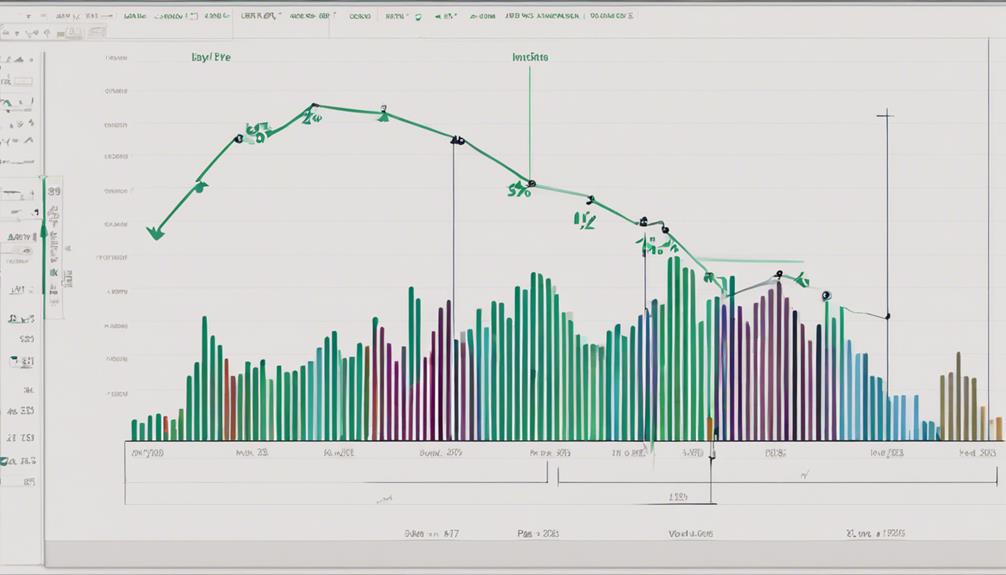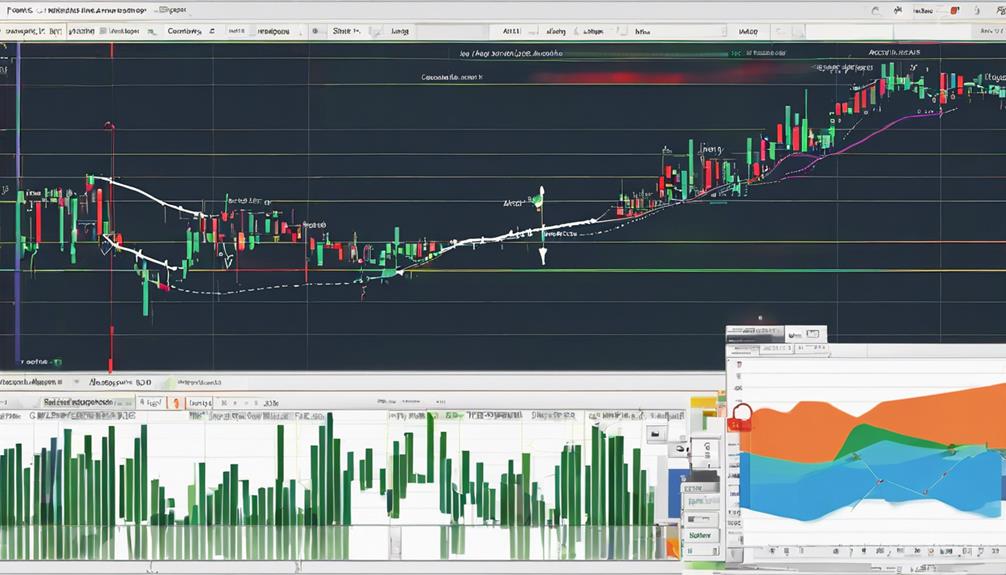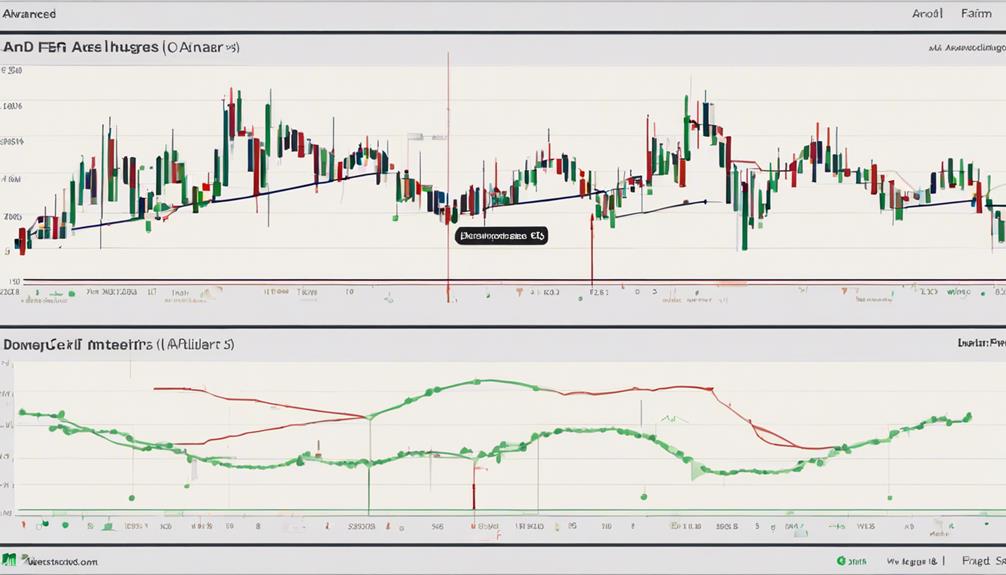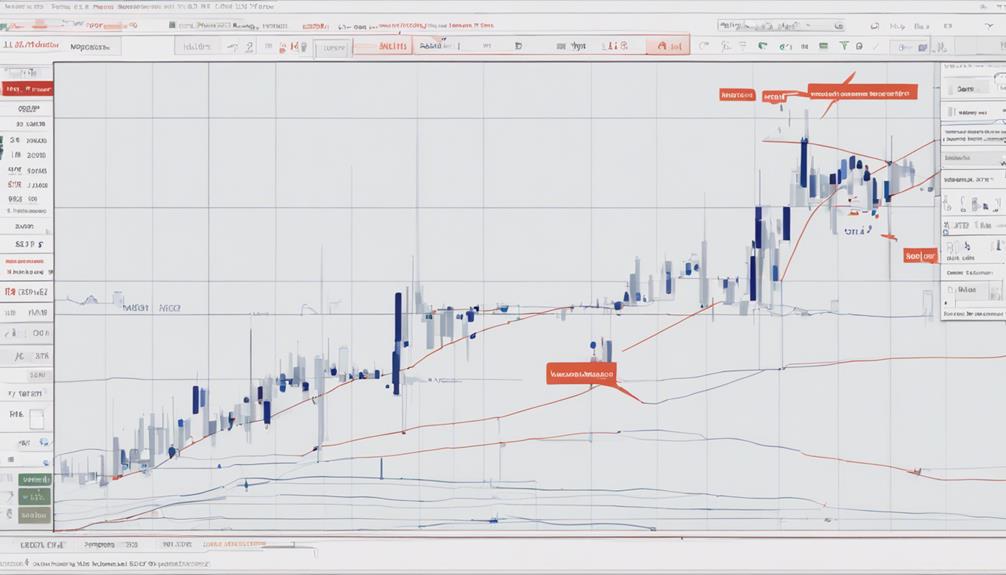When analyzing stock trends, have you ever come across the Accumulation Distribution Line (ADL) indicator and wondered about its significance?
Understanding how this indicator tracks the flow of money in and out of a security can provide you with valuable insights for making informed trading decisions.
By uncovering the intricacies of the ADL, you can potentially unlock a powerful tool that could elevate your technical analysis skills and enhance your overall trading strategies.
Understanding ADL Technical Indicator
The Accumulation Distribution Line (ADL) technical indicator is a crucial tool for assessing buying and selling pressure in the financial markets. It evaluates the flow of money into or out of a security by analyzing price movements and trading volume. ADL helps traders understand market sentiment and trend direction by identifying divergences between price trends and volume flow.
By monitoring the ADL line, traders can confirm existing price trends, spot potential reversals, and generate trading signals based on changes in accumulation and distribution. This indicator provides valuable insights into the strength of trends and can assist in making informed trading decisions.
Understanding how ADL reflects buying and selling pressure is essential for comprehending market dynamics and predicting potential price movements.
Calculation of ADL Indicator

Exploring the Calculation of the ADL Indicator reveals the intricate process of evaluating buying and selling pressure in financial markets through a meticulous analysis of price movements and trading volume.
The ADL Indicator calculation involves adding the Money Flow Volume (MFV) to the previous period's ADL value. Money Flow Volume (MFV) is derived from multiplying the Money Flow Multiplier (MFM) with the volume of the current period.
This formula integrates the cumulative assessment of buying and selling pressure based on MFV values, tracking money flow to determine accumulation and distribution levels.
Interpreting ADL Indicator Signals

Analyzing ADL Indicator signals provides valuable insights into potential trend reversals by examining the interplay between price movements and volume flow in financial markets.
- When the ADL indicator shows increasing ADL during high volume periods, it confirms a bullish trend.
- Conversely, a bearish trend is confirmed when the ADL decreases during high volume periods.
- Divergences between price action and ADL trends are crucial in interpreting signals accurately. Bullish divergence occurs with bearish price action and increasing ADL, while bearish divergence involves bullish price action and decreasing ADL.
Understanding these relationships is essential for traders to make informed decisions based on the ADL indicator's signals.
Advanced Strategies With ADL Indicator

To leverage the potential of the ADL indicator beyond basic trend confirmations, consider implementing advanced strategies that focus on interpreting divergences between price action and ADL signals. By analyzing these divergences, traders can anticipate potential trend reversals with greater accuracy.
Incorporating moving averages or trend lines with ADL can further enhance the identification of key reversal points. Additionally, evaluating accumulation and distribution patterns using the ADL indicator can help confirm the strength and direction of a trend.
When combined with volume analysis, the ADL indicator provides valuable insights into market sentiment, aiding in the identification of significant trend reversals. Implementing these advanced strategies can empower traders to make more informed decisions based on a comprehensive analysis of price movements and volume dynamics.
What Are the Top Tips for Using the ADL Technical Indicator?
When using the ADL technical indicator, comprehensive ADL indicator tips can be valuable. Understanding how to interpret the accumulation/distribution line can help traders assess the strength of a trend and make more informed trading decisions. Utilizing the ADL indicator effectively can be a key part of a successful trading strategy.
What are the top tips for understanding and using the ADL technical indicator?
When using the ADL technical indicator, it’s essential to understand and follow the top 3 ADL tips. Firstly, pay attention to the slope of the ADL line to identify buying and selling pressure. Secondly, use divergence between the ADL line and price movements to anticipate potential trend reversals. Lastly, confirm signals with other technical indicators for more accurate decision-making.
Pros and Cons of ADL Indicator

The ADL indicator serves as a valuable tool for providing early insights into market trends and sentiment, offering both advantages and drawbacks to traders.
- Early Warning Signals: ADL provides early indications of potential market trends, helping traders anticipate price movements.
- Market Breadth Insights: It's easy to calculate and offers insights into market breadth, indicating the strength of a trend.
- False Signals: However, in highly volatile markets, ADL may generate false signals, leading to potential misinterpretations of market conditions.
Integrating ADL with technical indicators like TRIN can enhance trading strategies and provide a deeper understanding of market conditions and trend quality. Traders should exercise caution and confirm ADL signals with other indicators to mitigate the risk of false signals.
Frequently Asked Questions
What Is the Technical Indicator Adl?
ADL, the Accumulation Distribution Line, tracks money flow in securities. It confirms price trends by analyzing volume, indicating market sentiment. Understanding ADL helps you spot reversals, confirm trends, and make informed trading decisions.
What Are the Top 5 Technical Analysis Indicators?
In technical analysis, the top 5 indicators are MACD, RSI, Bollinger Bands, Fibonacci Retracement, and VWAP. These tools help you gauge price trends, momentum, volatility, and key support/resistance levels. Mastering them enhances your trading decisions.
How Do You Interpret Accumulation Distribution Indicator?
To interpret the Accumulation Distribution Indicator (ADL), observe rising ADL for bullish sentiment and falling ADL for bearish sentiment. Look for divergence from price movements signaling potential reversals. Confirm trend strength with high volume periods matching ADL increases.
What Is the Most Successful Trading Indicator?
You must understand that the most successful trading indicator is subjective and varies by individual preference and strategy. Common ones like Moving Averages, RSI, MACD, and Bollinger Bands are popular, but personal alignment is key.
Conclusion
In conclusion, mastering the ADL technical indicator can unlock a treasure trove of insights for traders. By understanding its calculation, interpreting its signals, and employing advanced strategies, you can gain a competitive edge in the market.
Despite its pros and cons, the ADL remains a valuable tool for predicting market sentiment and trend direction. Like a skilled navigator using a compass to navigate turbulent waters, the ADL can guide you towards profitable trading opportunities in the ever-changing financial landscape.
